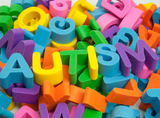Parents, Teachers, and Allies: Supporting Students with Autism Together
At StudyBee Education Supply, we believe that every child deserves the chance to thrive, and for students on the autism spectrum, that journey is most successful when the people around them work in harmony. Autism Awareness Month is a powerful reminder that support doesn't stop at the classroom door—or at home. It lives in the everyday interactions, the tools we choose, and most importantly, in the collaboration between parents, teachers, and allies.
Communication Is the Cornerstone
When parents and educators maintain open, respectful, and proactive communication, students benefit. Sharing information about routines, behaviors, sensory sensitivities, and learning strategies can make transitions between home and school smoother—and more comfortable for the student.
Teachers might notice patterns or triggers in a school setting that are helpful to address at home. Likewise, parents can offer insights into what’s working outside of school that might be adapted in the classroom. It’s not about having all the answers—it’s about sharing observations and solutions to support the whole child.
Consistency Creates Confidence
Children with autism often thrive with predictability and consistency. When home and school environments align in routines, behavioral expectations, and reinforcement strategies, students can navigate both worlds with greater confidence and less anxiety.
For example, using the same type of visual schedule at home and in school, or having consistent language for instructions and praise, can create a more seamless experience. StudyBee’s organizational and visual learning tools are designed to support this kind of continuity, helping students feel grounded and understood, wherever they are.
Allies Make the Difference
Allies come in many forms—special education staff, therapists, school aides, classroom peers, and even siblings. Together, they create a network of encouragement and advocacy that reinforces the student’s strengths, builds self-esteem, and celebrates progress in all its forms.
Inclusion isn’t just a program—it’s a mindset. It happens when general education teachers embrace inclusive strategies, when parents advocate with compassion and clarity, and when peers are taught empathy and acceptance.
Recent Posts
-
Turn First-Day Jitters Into Buzz-Worthy Moments
Helping Students (and Parents) Feel Ready, Calm, and Confident The first day of school can feel like …Aug 7th 2025 -
Celebrating the Heart of Education: Teacher Appreciation Week 2025
As we step into Teacher Appreciation Week 2025, it's the perfect time to pause, reflect, and celebra …May 22nd 2025 -
Parents, Teachers, and Allies: Supporting Students with Autism Together
At StudyBee Education Supply, we believe that every child deserves the chance to thrive, and fo …Apr 15th 2025





